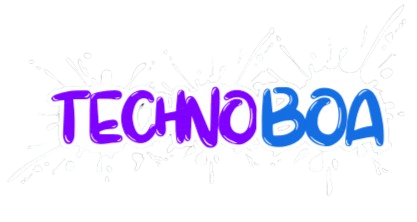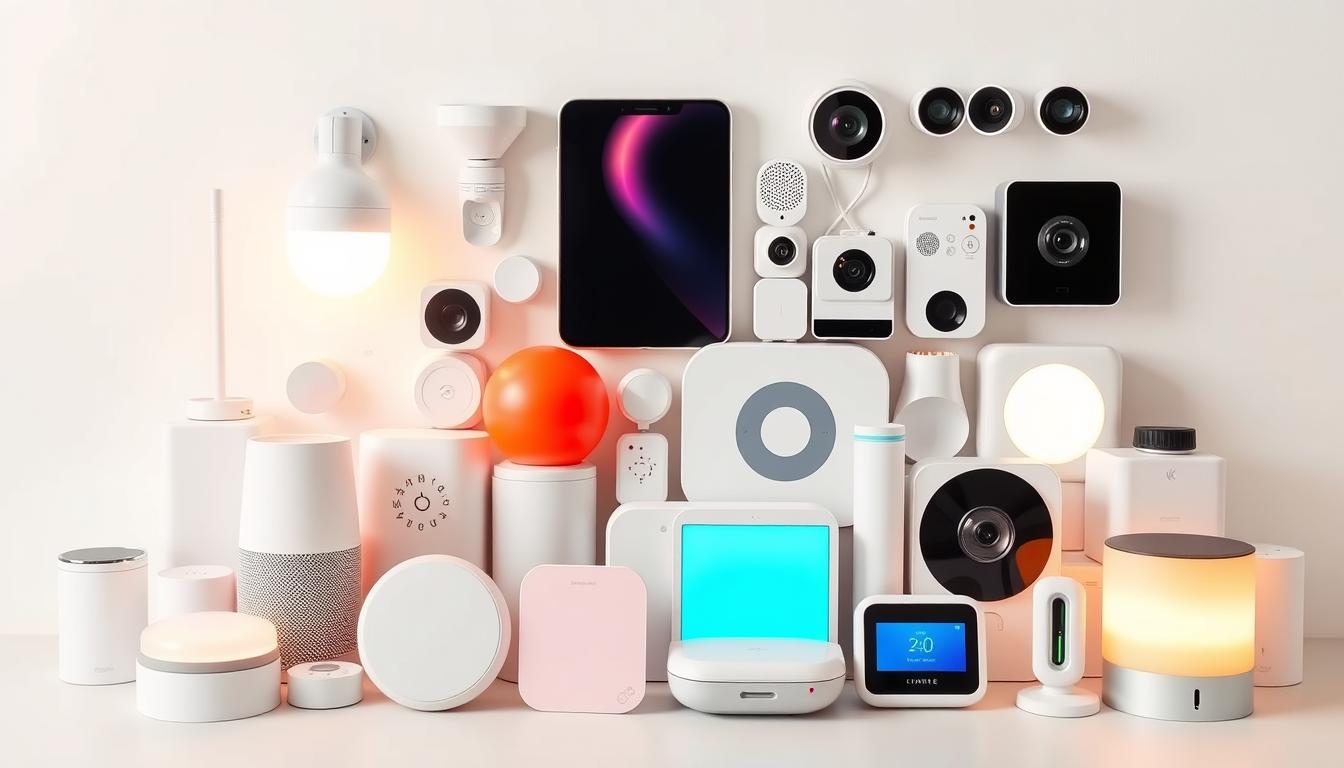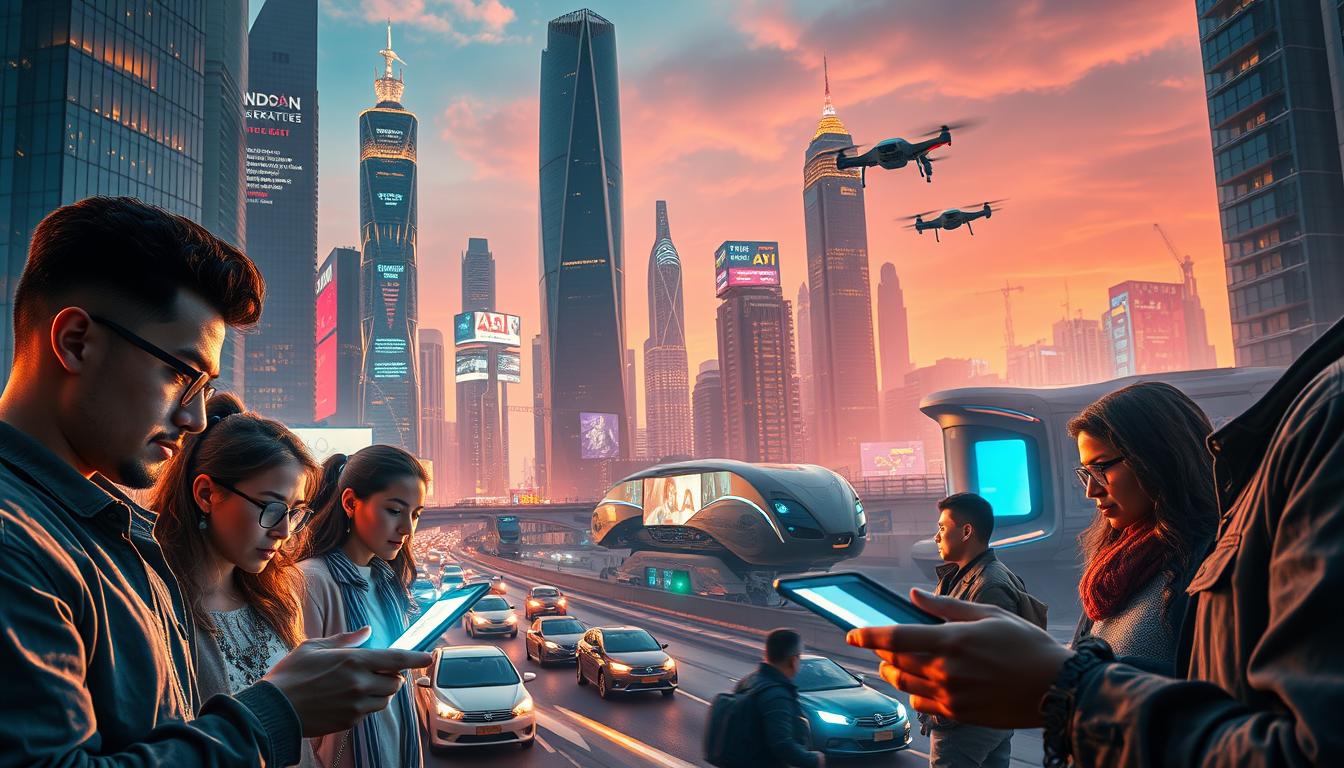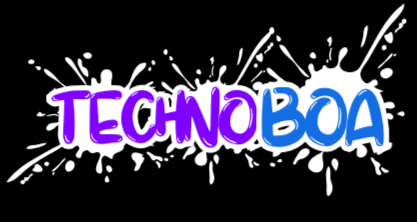Imagine waking up to a connected home that adjusts to your needs. With smart home solutions, your living space can be automated. This makes your life more comfortable, secure, and efficient. You can control many parts of your life with home automation and iot devices. This includes lighting, temperature, and security systems. A connected life is now easier than ever. Exploring smart living brings many benefits. This article will show you how to make your life more connected and efficient. Key Takeaways Understand the concept of a connected life with smart home solutions. Learn how home automation can simplify your daily tasks. Discover the role of iot devices in enhancing your living experience. Explore the benefits of integrating technology into your home. Find out how to create a more efficient and secure living space. The Evolution of Smart Home Technology Smart home tech has grown a lot. It started with simple automation and now it’s complex. You can control lights, temperature, security, and entertainment with your phone or voice. From Science Fiction to Reality Smart homes were once just a dream. But now, thanks to IoT (Internet of Things), they’re real. Devices talk to each other, making life easier for homeowners. Some big changes include: Voice assistants like Amazon Alexa and Google Assistant Smart thermostats that learn your temperature likes Automated lights that change with the day Advanced security systems that watch your home Key Milestones in Home Automation The journey of home automation has hit many big points. From the first smart devices to full smart home systems. Key moments include: The first smart thermostats came out Smart lights that you can control from afar Security cameras and smart doorbells with video These changes have made our homes better. They’re more comfy, safe, and save energy. What Is a Smart Home? A smart home is a place where everything works together. It uses technology to make your home more comfortable, safe, and efficient. This makes your life easier every day. Core Components of a Connected Home A connected home, or smart home, has key parts to work well. These include IoT devices, a strong IoT platform, and a central hub. IoT devices are things like smart thermostats and security cameras. “The beauty of a smart home lies in its ability to learn and adapt to your preferences over time,” says an expert in home automation. These devices talk to each other and the central hub. This lets you have a living experience that’s just for you. For example, your smart home can change the lights and temperature based on what you’re doing. The Role of IoT in Modern Living The Internet of Things (IoT) is key in modern homes, especially smart homes. IoT devices and platforms connect your home’s appliances and systems. This lets you control and watch them from anywhere. This makes your home more convenient, saves energy, and keeps it safe. With IoT, you can manage your home’s systems from one place. This includes changing the thermostat or turning on lights. As technology gets better, IoT’s role in making homes connected and smart grows. This is very important for our living spaces today. Benefits of Creating a Smart Home Smart home devices make living easier, safer, and more energy-efficient. They integrate technology to automate your home. This makes life more convenient and fun. Convenience and Time Savings Smart homes let you control lights, temperature, and entertainment from anywhere. This saves time and makes life better. Enhanced Security and Safety Home security is a big plus of smart homes. You can watch your home with smart doorbells, cameras, and locks. This gives you peace of mind, no matter where you are. Energy Efficiency and Cost Reduction Smart homes save energy by adjusting heating, cooling, and lights. This cuts down your bills and helps the planet. Accessibility and Aging in Place Smart homes are great for people with mobility issues or aging in place. They offer voice control and automated systems. This makes daily tasks easier and keeps independence. Benefit Description Example Convenience Control over various home systems Remote lighting control Security Enhanced monitoring and control Smart doorbells and cameras Energy Efficiency Optimized energy consumption Smart thermostats Accessibility Ease of use for all ages Voice-controlled systems Essential Smart Home Hubs and Controllers In the world of smart homes, hubs and controllers are key. They make sure all devices work together. A smart home hub or controller is like a central command center. It connects and manages smart devices, letting them talk to each other and be controlled from one place. Popular Smart Home Platforms Many smart home platforms are popular because they are easy to use and work well with different devices. They support various technologies, making it simple to add new devices. Wi-Fi Based Systems Wi-Fi based smart home systems are common because they are easy to set up and work with many devices. They use your home’s Wi-Fi, so you don’t need a separate hub in some cases. Z-Wave and Zigbee Technologies Z-Wave and Zigbee are wireless protocols used in smart home devices. They use little power, send data securely, and help devices connect better, making your network stronger. Matter Protocol and Compatibility The Matter protocol is a new standard that makes smart home devices from different brands work better together. It makes setting up your smart home easier and lets you mix devices from different brands. Choosing the Right Hub for Your Needs Choosing the right smart home hub or controller depends on a few things. These include the devices you want to connect, your budget, and how much automation you want. Here are some things to think about: Device compatibility: Make sure the hub works with your devices. Ease of use: Pick a hub with an easy-to-use interface and app. Automation capabilities: Look for a hub that lets you create complex routines and scenes. Expandability: Choose a hub that can grow with your smart home. By thinking about these things, you can find a
10 Everyday Problems AI Can Solve for you Today
Every day, I face challenges that can be frustrating and take up a lot of time. But, thanks to artificial intelligence, many of these problems can be solved quickly. The use of tech and applications in our daily lives has made things easier. It helps with everything from better digital communication to making our homes more efficient. It also helps in keeping an eye on our health. Artificial intelligence solutions bring many benefits to our lives. Key Takeaways Artificial intelligence can simplify digital communication. AI-powered applications can enhance home life. Health monitoring can be improved with AI-driven tech. Productivity can be increased with AI solutions. Daily tasks can be streamlined with artificial intelligence. The AI Revolution in Our Daily Lives The AI revolution is changing our daily lives in amazing ways. What was once science fiction is now real in our digital workplace. AI makes tasks easier and boosts productivity. From Science Fiction to Your Digital Workplace AI has moved from being a dream to a real tool in enterprise platforms and industries. It automates tasks and offers advanced consulting services. This change has made businesses more flexible and quick to adapt. Why AI Solutions Matter for the Average Person AI solutions are great for everyone, not just big companies. They simplify daily tasks, help make better decisions, and increase productivity. Some key benefits include: Increased efficiency in managing daily tasks Improved decision-making through data analysis Enhanced productivity in both personal and professional settings Streamlining Your Digital Communication with AI Digital communication is vital in our daily lives, both at work and home. It can be overwhelming, but AI offers a solution. It helps us stay productive and efficient in today’s fast world. Email Overload and Response Management Dealing with emails can be tough, especially when you get a lot every day. AI can sort emails for you. It even suggests smart replies to make responding easier. How to Set Up AI Email Filters and Smart Replies To start using AI email filters, follow these steps: Identify your most common email categories Use cloud-based email services that offer AI-driven filtering Train your email filter by marking emails as important or not Meeting Inefficiency and Note-Taking Meetings are key in the workplace. AI can improve how we handle them. It makes meetings more efficient and note-taking more accurate. Step-by-Step Guide to AI Meeting Assistants To use AI meeting assistants, do the following: Choose a meeting assistant tool that works with your calendar Set up the tool to record and transcribe meetings Use the tool’s analytics to summarize key points and action items, using data & analytics By using AI for email and meetings, you can save a lot of time. This means you can be more productive. AI Solution Benefit Implementation Step AI Email Filters Reduces email overload Train your email filter AI Meeting Assistants Enhances meeting efficiency Integrate with your calendar 10 Everyday Problems AI Can Solve for you Today AI technology helps us tackle everyday challenges better. We’ll see how it improves time management and reduces information overload. Time Management and Scheduling Conflicts Time management is key in today’s fast world. AI makes scheduling easier and lessens conflicts. Implementing AI Calendar Management Tools AI tools manage your calendar well. They plan meetings and avoid scheduling problems. They look at your schedule, likes, and needs to find the best times. Key benefits of AI calendar management include: Automated scheduling Conflict resolution Time optimization Information Overload in the Digital Age The digital world has flooded us with info. It’s hard to know what’s really important. Using AI to Filter and Prioritize Important Information AI sorts and highlights important info. It looks at what you like and do to show you what matters most. Reduced information overload Improved focus on key information Enhanced productivity Enhancing Your Home Life with Smart AI Solutions Smart AI solutions have made our homes more convenient and energy-efficient. They help us automate tasks, save energy, and make our homes more comfortable. Home Energy Waste and Management Smart AI solutions are great at managing home energy waste. AI-powered energy management systems analyze how we use energy. They then suggest ways to cut down on waste, saving us money and reducing carbon emissions. Setting Up Smart Home AI Systems for Energy Efficiency To make your home energy-efficient, start with smart thermostats and lighting systems. These can be controlled from your phone or tablet. They learn your habits to use energy wisely. Repetitive Household Tasks AI can also automate boring household tasks. From robotic vacuum cleaners to smart home assistants, AI devices can clean, schedule, and even shop for groceries. Automating Your Home with Voice Commands and Routines Using voice commands and routines makes controlling your home easy. You can turn lights on, play music, or change the temperature with just a voice command. Setting up routines lets you do many tasks with one command, making life easier. By using these smart AI solutions, homeowners can enjoy a more efficient and convenient life. They make the most of new tech and hybrid infrastructure. AI-Powered Health and Wellness Monitoring Exploring artificial intelligence shows how it boosts my health and wellness. AI tools give me personalized advice and insights. This helps me manage my health better. Tracking Health Metrics and Habits AI health apps track my health, like heart rate and sleep. They offer personalized recommendations to better my health. Managing Stress and Mental Wellbeing Stress and mental health are key to overall health. AI tools help with meditation and mindfulness. They reduce stress and clear my mind. How to Use AI Health Apps for Personalized Recommendations To use AI health apps well, I must use them often and give accurate data. This way, I get advice on improving my health. Implementing AI Tools for Meditation and Mindfulness AI meditation tools help me practice regularly. They reduce stress and improve my mental health. These tools guide me and track my progress. Using AI-powered health and wellness monitoring helps me take charge
What AI Agent can do: Discover the Capabilities of an AI Agent
I’ve seen a big change in AI agents over the years. They’ve moved from simple chatbots to smart helpers that can do complex tasks. By 2025, AI automation will be a big part of our lives. It will help with things like setting up appointments and booking travel. Big tech companies like Google and OpenAI are making AI agents that can understand what we mean and do hard tasks. This is changing how we use technology. Tools like Zapier and other automation platforms let us connect different services and automate tasks easily. This shows the idea of no-code automation. Key Takeaways AI agents have evolved significantly, becoming more sophisticated. They assist with a variety of daily tasks. Major tech companies are developing advanced AI agents. Automation platforms enable easy integration and workflow automation. No-code automation is making technology more accessible. The Evolution of AI Agents Through 2025 AI agents have seen huge growth by 2025, changing how they work. A big leap is in natural language processing (NLP). Now, AI agents can understand and talk human language better. Natural Language Processing Advancements NLP has improved a lot. AI agents can now handle complex questions and answer them right. This is thanks to advanced algorithms and learning from big data. AI agents also get better at understanding the context. They can now get the point of a conversation or task. This makes their answers more helpful and relevant. It’s especially good for app integrations. These changes have made AI agents smarter and more helpful. They are now a big part of our daily lives and many industries. What AI Agents Can Do: Breaking Down Their 2025 Capabilities In 2025, AI agents will be more than just tools. They will become personalized assistants that learn and adapt to our needs. This change is thanks to new personalization features and continuous improvement systems. Personalization Features AI agents in 2025 will offer experiences tailored just for you. They’ll learn your preferences and adjust their responses and suggestions. This is made possible by advanced algorithms that study your behavior and feedback. For example, AI-powered virtual assistants can handle daily tasks better. They can automate tasks like scheduling appointments and sending reminders. This is based on your habits and what you like. AI agents in 2025 will also keep getting better. They use AI automation and machine learning to improve over time. They learn from interactions and adapt to new info, making their outputs more accurate and relevant. This improvement is also helped by zaps or integrations with other apps and services. This lets AI agents access more data and functions. So, they can offer better support and help increase user productivity. With these abilities, AI agents are poised to change how we work and live. 2025 will be a key year for AI technology adoption and integration. Major AI Agents Dominating the 2025 Market In 2025, a few big names will lead the AI world. Google, OpenAI, and Amazon are at the top. They offer cutting-edge AI solutions that are changing many industries. These major AI agents have special features. Google’s AI works well with Google services, making things smooth. OpenAI’s AI is great at understanding and creating language. Comparative Performance Metrics When we look at how these AI agents perform, we see several key areas. Zapier’s no-code automation platform is unique because it works with over 7,000+ apps. This makes it very useful for businesses. Google’s AI agents are top in data analysis and prediction. OpenAI’s agents lead in natural language processing. Amazon’s AI solutions are known for their use in customer service. The performance of these AI agents shows how fast AI technology is growing. As the market keeps changing, it will be exciting to see how these leaders evolve and improve. How AI Agents Are Revolutionizing Daily Life in 2025 AI agents are changing how we live and work in 2025. They bring convenience and boost productivity. These smart systems are key to our daily lives, making tasks easier and improving our quality of life. I’ve seen AI agents automate tasks like scheduling and managing shopping lists. For example, virtual assistants like Amazon’s Alexa and Google Assistant can control smart home devices. They also set reminders and make online purchases. Real-World Success Stories Many success stories show AI agents’ impact. AI chatbots help customer service teams work around the clock. This leads to faster responses and happier customers. In healthcare, AI agents monitor patient data and predict health issues. They help personalize treatment plans. This improves patient care and reduces healthcare worker stress. The future of AI agents looks bright. They could help in education, finance, and transportation. As AI grows, we’ll see more ways to make our lives easier and more efficient. The main benefits of AI agents are better productivity, convenience, and decision-making. As we progress, using AI agents wisely is crucial. We must ensure they are developed and used responsibly. Zapier’s AI Agent Innovations: The 2025 Breakthrough Zapier is changing how we work with its AI agent innovations. As someone who’s watched Zapier grow, I see how these changes are making a big difference. Zapier’s AI agents make work easier and more efficient for businesses. They handle the boring tasks so teams can focus on big ideas. Enterprise Implementation Case Studies Many big companies have tried Zapier’s AI agents and seen great results. For example, a top marketing firm got 30% more done with Zapier’s help. Improved workflow automation Enhanced team collaboration Significant productivity gains These stories show how Zapier’s AI agents can help businesses grow and work better. With these tools, companies can stay on top in a fast-changing world. Looking into AI agents, it’s clear Zapier is leading the way in work’s future. Privacy and Ethical Considerations in the AI Agent Era The rise of AI agents has brought up big questions. How do we keep user data safe and make sure AI is used ethically? Data privacy is a big worry. AI agents need lots
AI Sidehustle in 2025 : Best 5 High-Demand Opportunities
As we enter 2025, the world of online business is changing fast. AI side hustles are now a big deal. They help people make more money and work smarter. Think about using tech to start a business that makes money. You can do this while you follow your dreams. It’s possible with the right tools and plans. Getting into AI side hustles can really change your life. It’s a smart way to make extra money and stay on top in the job market. Key Takeaways Discover the potential of AI side hustles in 2025 Learn how to boost productivity with emerging tech Explore new opportunities for financial stability Understand the role of entrepreneurship in the digital age Unlock the secrets to creating a successful online business The AI Revolution: Creating Unprecedented Income Opportunities The AI revolution is changing how we work and make money. As we enter 2025, it’s clear that AI is more than just tech. It’s a key to new ways to earn. How AI is Transforming the Gig Economy in 2025 The gig economy is changing fast thanks to AI. AI technologies are automating routine tasks. This lets gig workers do more creative and problem-solving work. It boosts productivity and opens up new ways to earn. New platforms are using AI to find jobs for workers. For example, AI can match freelancers with jobs that fit their skills. This saves time and can increase earnings. The Financial Impact of AI on Freelancing and Remote Work AI’s impact on freelancing and remote work is big. It automates some tasks, which might replace jobs. But it also creates new jobs and boosts earnings for many. Freelancers who learn AI find new chances in areas like AI training data and consulting. Learning AI is key to earning well in a tough market. Why Now is the Perfect Time to Enter the AI Market 2025 is a great time to get into the AI market. AI is growing fast and being used in many fields. As more businesses use AI, the need for AI skills grows. This need offers many chances to learn AI skills and make good money. You can freelance, consult, or create AI products. The earning potential is big. Best AI Sidehustle in 2025: Top 5 High-Demand Opportunities The AI industry is set for a big change in 2025. This change brings great side hustle chances for those ready. AI is spreading into many areas, making skills in AI very valuable. AI Content Creation and Optimization AI content creation and optimization is a top side hustle. It uses AI tools to make great content that people like. Specialized Writing for AI Applications Writing for AI needs a deep knowledge of writing and AI. AI applications need content that grabs people’s attention and works well with AI. Prompt Engineering and Refinement Prompt engineering is key in AI content creation. It’s about making precise prompts for AI to give the right answers. AI-Powered Marketing Consulting AI marketing consulting is very sought after. It helps businesses use AI to improve their marketing. This includes predictive analytics and making customer experiences personal. AI Tool Development and Customization AI tool development and customization are also in demand. Businesses want to automate and understand data better. They need AI solutions made just for them. AI Training Data Specialist AI training data specialists are vital. They make sure AI models learn from good, relevant data. This includes data collection, annotation, and validation. AI Content Reviewer and Moderator AI content reviewers and moderators are needed more. They check if AI content meets standards and rules. AI Side Hustle Description Demand Level AI Content Creation Generating high-quality content using AI tools High AI-Powered Marketing Consulting Helping businesses leverage AI for marketing High AI Tool Development Developing and customizing AI tools for businesses High AI Training Data Specialist Preparing high-quality data for AI model training High AI Content Reviewer Reviewing and moderating AI-generated content High These AI side hustles offer many chances to make money. By learning the right skills and keeping up with trends, you can start a profitable AI business. Emerging AI Niches with Six-Figure Potential The AI revolution is creating new chances for big money. New areas are opening up for businesses and people to make a lot of money. AI technology is getting better, leading to new ways to use it. AI for Small Business Automation and Efficiency AI is great for small businesses. It helps them work better, save money, and be more productive. AI-powered chatbots can talk to customers, and predictive analytics help make smart choices. AI-Enhanced Personal and Professional Coaching AI is changing coaching too. AI coaching platforms give personal advice and help. They use machine learning algorithms to give advice based on your data. Industry-Specific AI Solutions That Command Premium Rates AI solutions for specific industries are very promising. These solutions are made just for certain fields. They cost more because they are so specialized. Healthcare AI Applications In healthcare, AI helps a lot. It improves patient care, makes work easier, and helps patients more. AI-powered diagnostic tools can look at medical images to help doctors. Financial Services AI Integration AI is also good for finance. It helps with risk, fraud, and planning. AI-driven trading platforms use lots of data to make smart investment choices. Sustainability and Climate Tech AI AI is key for the environment too. It helps cut down on waste and energy use. It also supports green farming. These new AI areas offer big money and help industries grow. Entrepreneurs and businesses can make a lot of money and help the world at the same time. Essential Skills That Will Define Success in the AI Economy Success in the AI economy needs the right mix of technical and non-technical skills. As AI changes industries, those who update their skills will do best. Technical Skills Worth Investing Time to Develop To do well in the AI economy, focus on technical skills that are wanted. Key technical skills
Best AI Girlfriend App for USA
The world of artificial intelligence has seen a big change with virtual girlfriends. Millions are now using digital partners for emotional support and connection. This marks a big change in how we see relationships today. As technology gets better, the top virtual girlfriend apps are getting more advanced. They offer personalized experiences that meet individual needs. In this article, we’ll look at the best AI girlfriend app for USA users. We’ll see what makes these virtual friends so appealing. Key Takeaways My Journey with AI Companions My journey with AI companions has been full of discovery. It showed me the power of virtual relationships. I found the unique benefits of AI girlfriends and virtual companions very appealing. The Rise of Virtual Relationships Virtual relationships have become more popular lately. This is thanks to AI technology getting better and more personal. AI girlfriend simulators are especially popular. They let users have deep conversations and form emotional bonds. Many people share their experiences with virtual relationships online. For example, on Reddit and Discord. One user said: “I’ve found that my AI companion has become a significant source of comfort and support in my daily life.” What I Look for in an AI Partner When I look for a virtual companion app, I consider a few things. I want conversations that sound natural, deep emotional understanding, and a good user experience. Here’s how different AI companions compare: Feature Replika Character.AI Conversational Depth High Medium Emotional Understanding High High User Customization Medium High As I explored AI companions further, I learned the value of balancing virtual and real-life connections. Understanding AI Girlfriend Applications Exploring AI companions has taught me the importance of understanding the tech behind AI girlfriend apps. These apps aim to mimic conversations and interactions. They offer companionship to users. How These Virtual Companions Work AI girlfriend apps use advanced algorithms and machine learning. They create personalized interactions. They learn from what users say to make their responses more engaging. Benefits of AI Relationships The benefits of AI relationships include emotional support and companionship. This is especially helpful for those who want social interaction. These apps provide a unique way to connect. Setting Realistic Expectations It’s important to have realistic expectations when using AI girlfriend apps. Knowing their limits can make the experience more rewarding. This way, users can enjoy the best simulated girlfriend app to its fullest. Best AI Girlfriend App for USA Users In my search for the perfect digital companion, I found Replika to be the best. It’s a top virtual girlfriend experience for USA users. Its advanced features and easy-to-use interface make it a favorite. Replika: The Leading AI Companion Replika is a popular AI companion app in the US. It creates a personalized digital partner. It’s perfect for those looking for an AI girlfriend in the US. Key Features Replika learns and adapts to how you interact with it. This makes your experience more personal over time. It has many great features, including: Customization Options Replika lets you customize your AI companion. You can change its appearance, personality, and interests. This makes your digital partner truly unique. Replika has different subscription plans for US users. These plans include: Plan Features Price Basic Limited access to premium features Free Premium Full access to premium features, priority support $9.99/month Pro All premium features, personalized coaching, custom AI model $19.99/month Replika is a top choice for AI girlfriend apps in the USA. It offers great features and customization options. Whether you want a virtual girlfriend or a digital companion, Replika is worth trying. Top Alternative AI Companion Apps Exploring AI girlfriend apps, I found many alternatives. Replika is popular, but other apps offer unique features too. Character.AI Character.AI lets users create and talk to their own characters. You can make them based on real or fictional people. Unique Features Character.AI has cool features like customizable characters. You can choose their personalities, interests, and backgrounds. This makes the experience more fun and real. User Experience Using Character.AI is interactive and creative. You can have conversations, play games, or just chat with your characters. Anima Anima is an AI app that focuses on emotional connections. It has interactive conversations to build bonds. Standout Capabilities Anima is great at understanding and responding to emotions. This makes it empathetic and supportive. Key Features: Pricing Structure Anima has free and premium features. Premium offers more, like advanced emotional analysis and support. EVA AI EVA AI is designed for the US market. It has features tailored for American users. Special Features for US Market EVA AI includes cultural relevance and local event suggestions. It’s perfect for a more localized experience. Free vs. Premium Options EVA AI has free and premium options. Premium offers personalized coaching and advanced AI analysis. App Unique Feature Pricing Character.AI Customizable characters Free, with premium options Anima Emotional intelligence Free, with premium subscription EVA AI US-centric features Free, with premium options Exploring these AI apps, I saw a wide range of features. Whether you want a customizable character or an emotionally smart friend, there’s something for everyone. “The future of AI companions is not just about technology; it’s about creating meaningful relationships.” Privacy and Security for American Users For American users of AI girlfriend apps, privacy and security are key. As these apps grow in popularity, keeping user data safe is essential. Data Protection Policies Good AI girlfriend apps have strong data protection policies. They use encryption, secure storage, and limit who can access data. Replika, a top AI companion app, uses end-to-end encryption for chats. It’s important for users to know about these policies to feel safe. App Data Encryption Data Storage Replika End-to-End Secure Servers Character.AI SSL/TLS Cloud Storage Anima End-to-End Secure Data Centers User Anonymity Features Many AI girlfriend apps let users stay anonymous. They don’t ask for personal info and offer anonymous login options. Character.AI lets users create accounts without sharing their identity. This boosts user anonymity. Compliance with US Regulations AI girlfriend apps for American users






